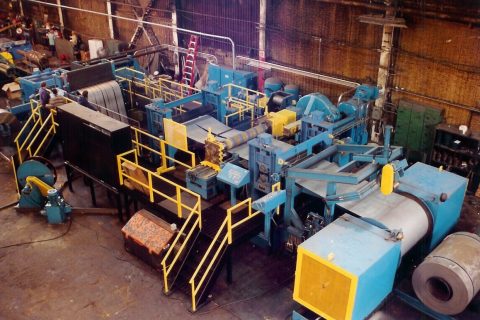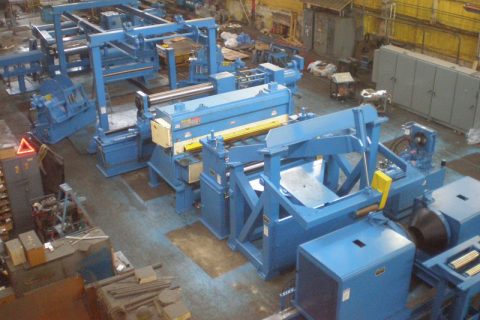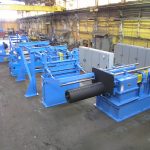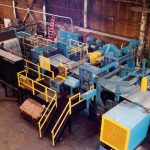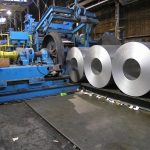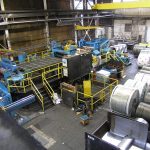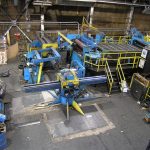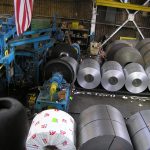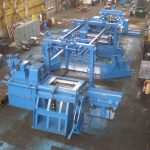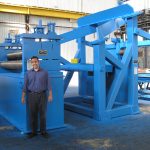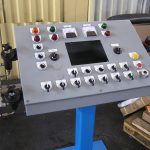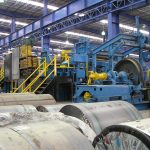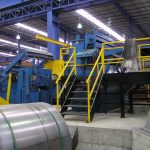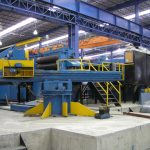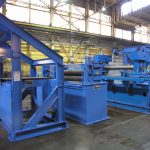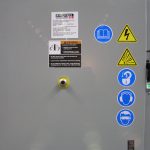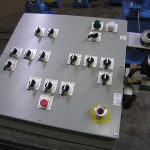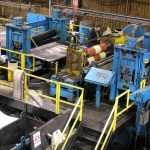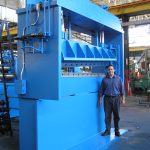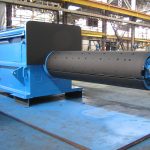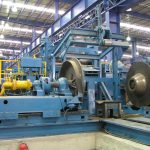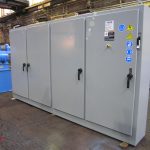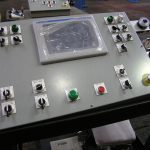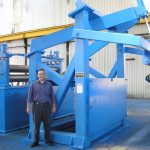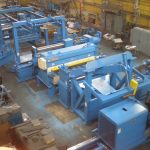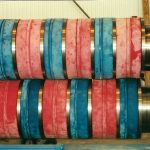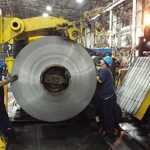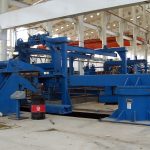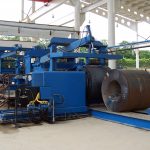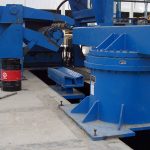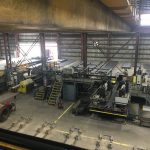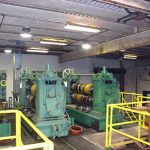A slitting line will create multiple widths or “mults” from a wider master coil. The mults are made from predetermined widths. The slitter consists of three main parts: an uncoiler, slitter, and recoiler. The material is fed from the uncoiler, through the nip between the two circular cutting wheels (one on top and another underneath), and then re-wound in slit mults on the recoiler. The slitting process has been referred to as part art and part science. It is important that the equipment supplier and end user work in concert so the proper components, arbor size, tooling package, horsepower and tensions are suitable for the material to be slit.
We are a leading manufacture in the industry with high speed slitting, automatic coil feeds and hands free coiling. Used for cutting narrow coil strips from main coils, our machinery comes in many widths and thickness and processes at speeds up to 300m/min.
We build our slitting lines to maintain high precision while allowing for changes to be made on the fly. High capacity coilers and total control over the machinery with state of the art technology to oversee quality control and automation, we offer our lines on time and on budget!
A slitting line produces longitudinal cuts in a master coil of steel to predetermined narrower widths. These smaller coils or “mults” are then sent to downstream operations such as metal stampers, tube producers or roll forming houses that will use the material in their final product. An ASP slitting line will accommodate from 8” to 96” wide, 5 ton to 60-ton capacity coils and from .006” to 1.00” thick material. Depending on the material thickness and yield strength, speeds from 100 to 2,000 feet per minute can be obtained.
The process begins with loading a coil of steel or master coil onto the uncoiler. The uncoiler can be a dual cone type for heavy gauges or a single end expanding mandrel type for heavy or light gauges. The coil can be loaded into the cones via a pusher type ramp or via a turnstyle and coil car that threads the mandrel of the single end into the inner diameter of the master coil. The hold down presses onto the outside diameter of the master coil and the bands are cut on the master coil. The coil is rotated off the cones or mandrel and peeled to allow the head of the coil to enter edge guides prior to the flattener and leveler (if flatness is critical in downstream operations). Next, The slitter, which consists of two parallel arbors mounted with rotary cutting knives.
These knives partially penetrate the coil stock causing a crack or fracture on both sides of the stock, separating the mults from one another. Rubber stripper rings are also employed depending on the material thickness to attain a good edge so no burr is present that will hinder downstream operations. As the material is slit, the far outside edges of the coil have edge trim. This edge trim is taken up on a scrap winder. If the material to be slit is extremely thin, a looping pit can be used to take up the varying thickness of the mults as the edge cuts are generally thinner than the center cuts. The thin the material, the longer the lineal footage in the master coil. The looping pit will take up the additional volume prior to entering the tension stand. The tension stand is located prior to the recoiler. A tensioning device is needed because the master coil is crowned or larger in diameter in the center of its width than at the edges. Without a tension stand, the slit material from the center of the master coil would take up more quickly while the outboard strips would hang loosely. The recoiler is an expanding mandrel type. It usually expands from 20” to 24” in diameter or greater with the use of expansion pads or leaves. The recoiler takes up the slit mults. The recoiler mandrel is fitted with an overarm device which is a shaft with separator discs which prevent interleaving of the narrower coil widths. The position of the discs are directly in-line with the slitting knives. The finished slit mults are banded on the outside diameter and are pushed off of the recoiler mandrel onto an awaiting coil car or turnstyle.
Our current equipment includes:
 60” x 9” Arbor Loopco, Loop Type, Complete w/Tooling
60” x 9” Arbor Loopco, Loop Type, Complete w/Tooling
 62” x 3/8” to 1/16” x 9” Arbor x 25 Ton Loopco Loop Type
62” x 3/8” to 1/16” x 9” Arbor x 25 Ton Loopco Loop Type
 72” x .250” x 8” Arbor x 60,000# Cauffiel Loop Type w/Tooling
72” x .250” x 8” Arbor x 60,000# Cauffiel Loop Type w/Tooling
 72” x .500” x 60,000# American w/Scrap Cutter, Terminal Equipment
72” x .500” x 60,000# American w/Scrap Cutter, Terminal Equipment
 96” x 70,000# Sesco w/Coil Car, Scrap Equipment for Aluminum
96” x 70,000# Sesco w/Coil Car, Scrap Equipment for Aluminum

